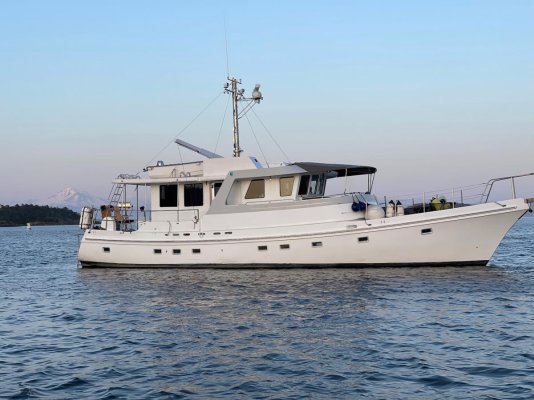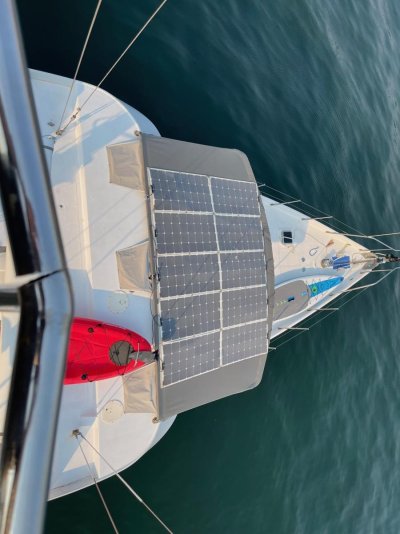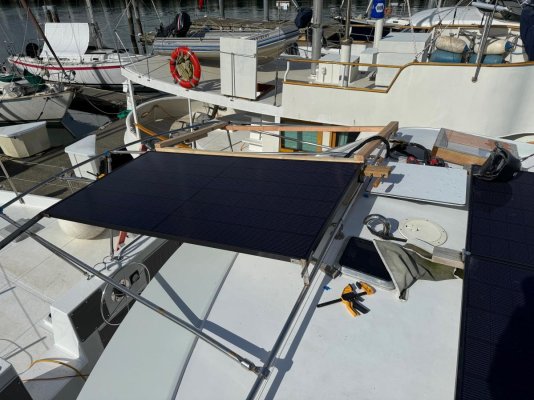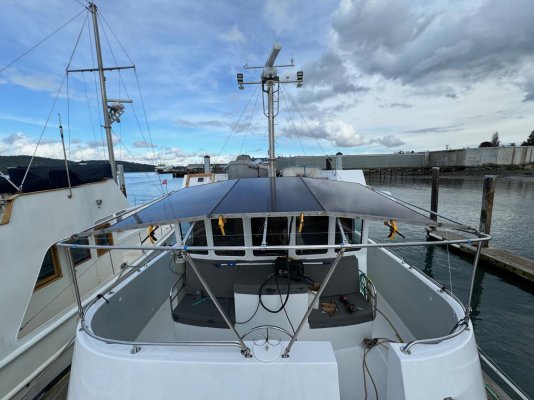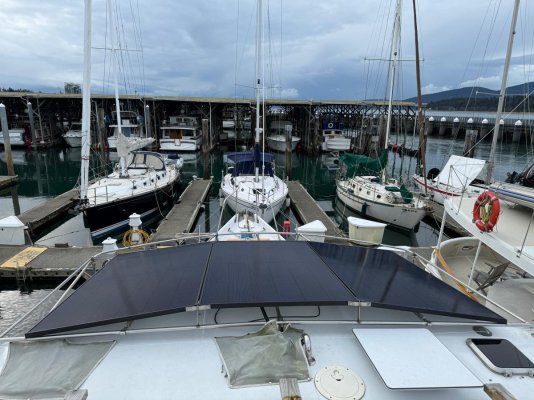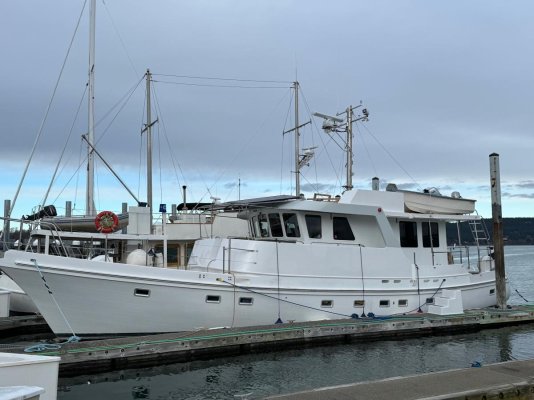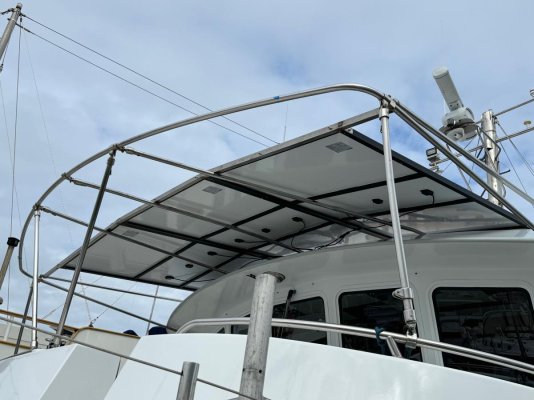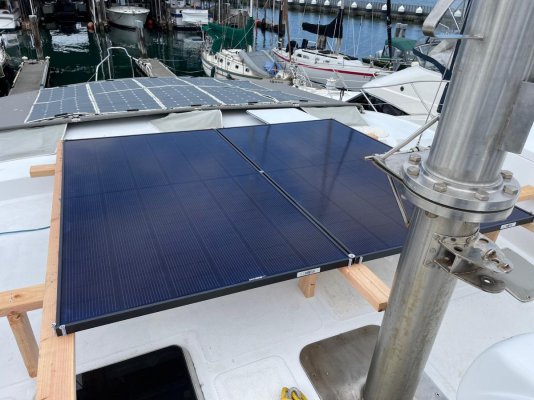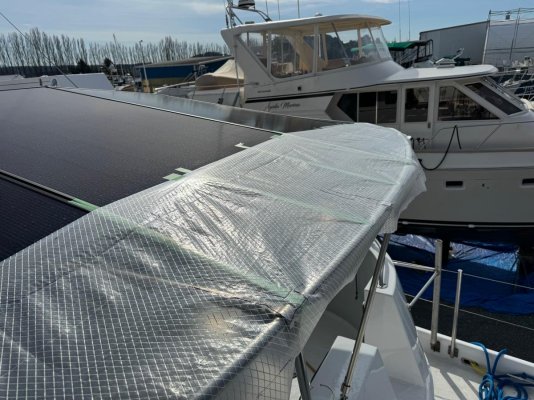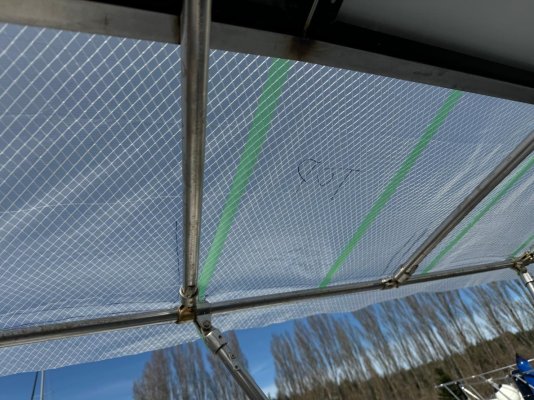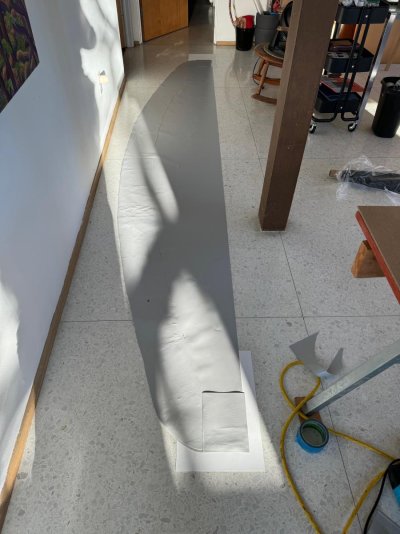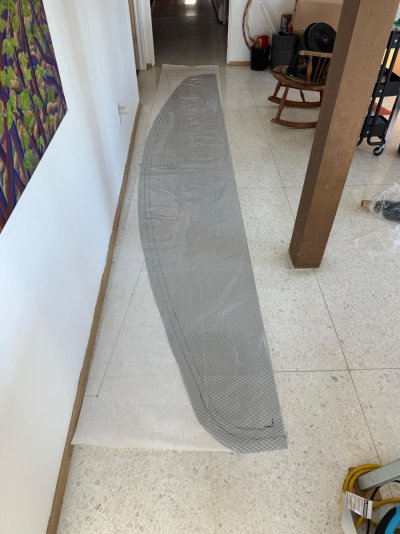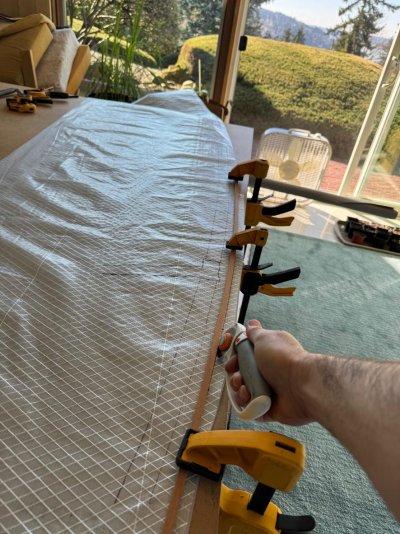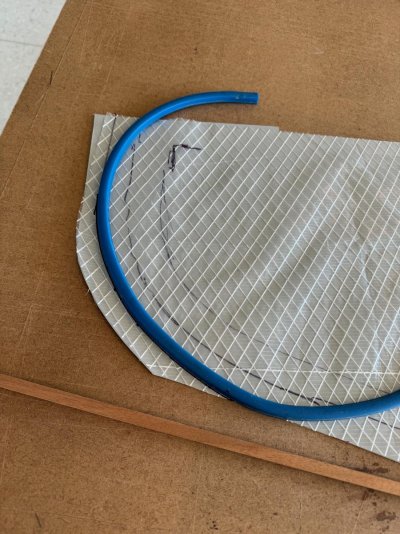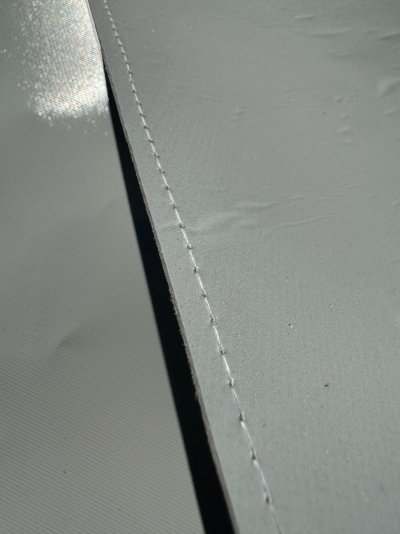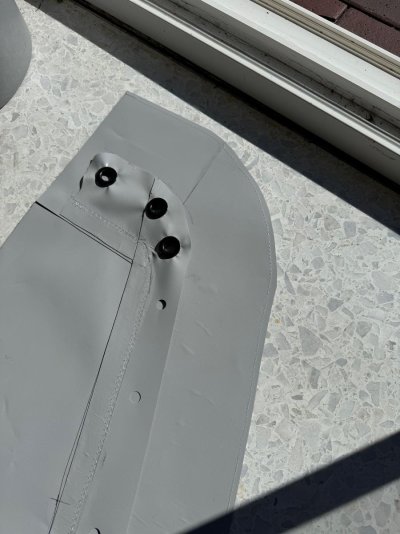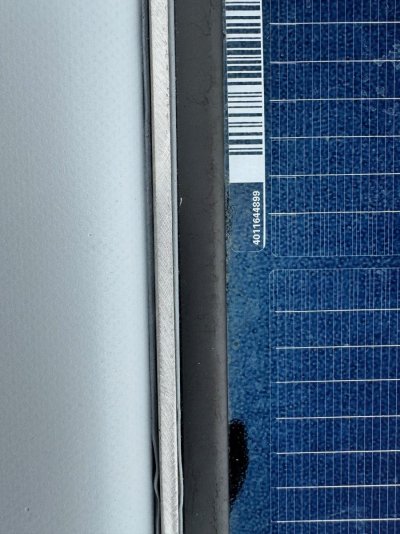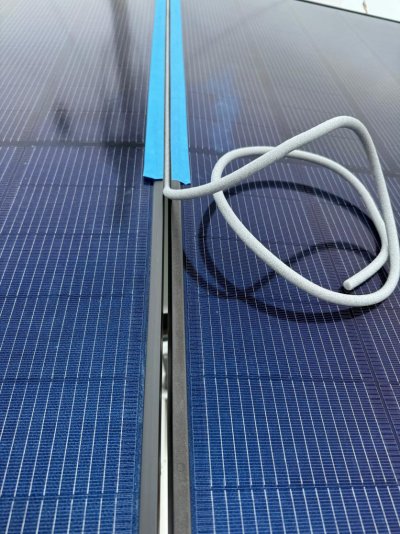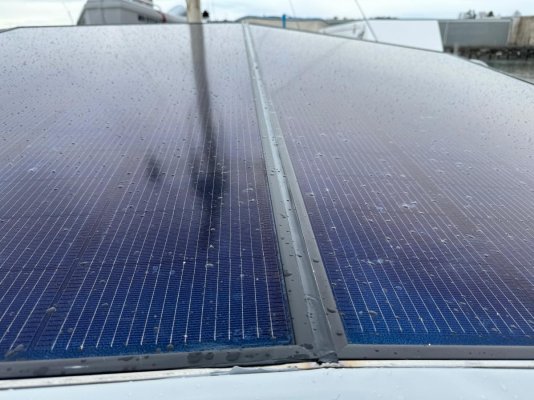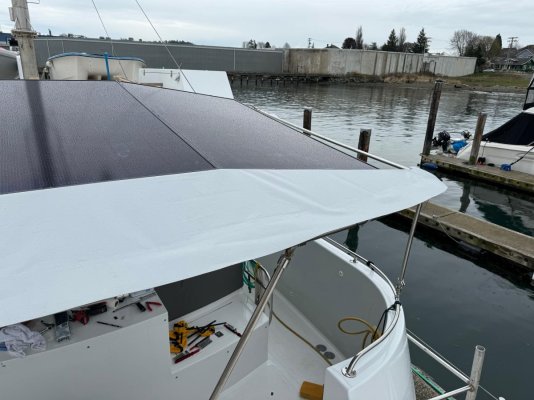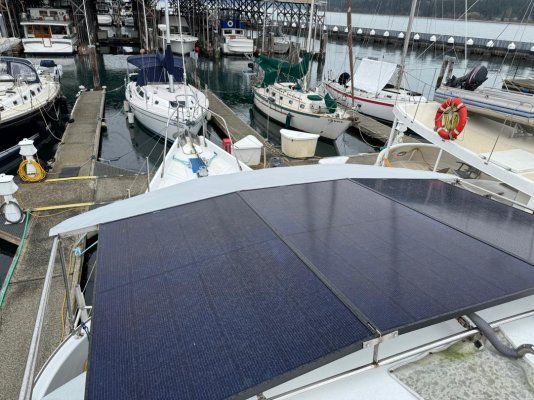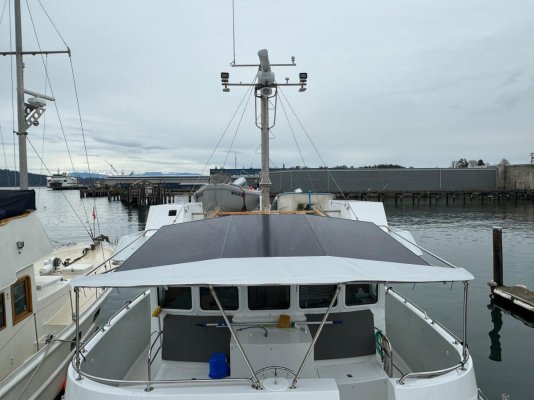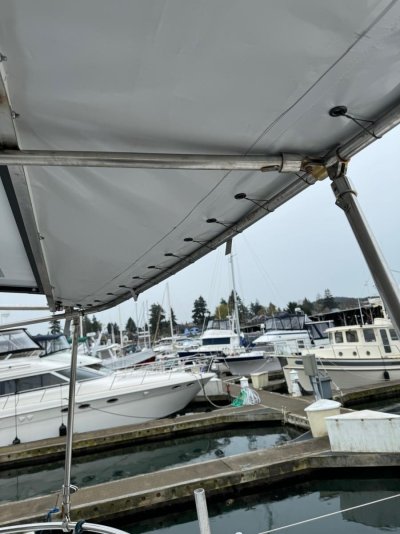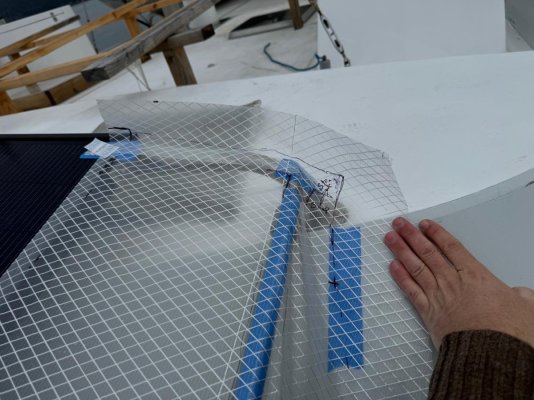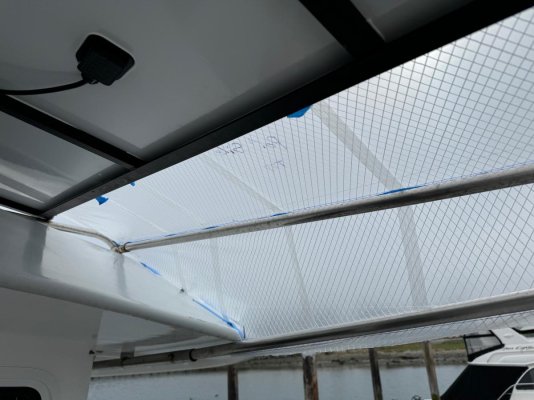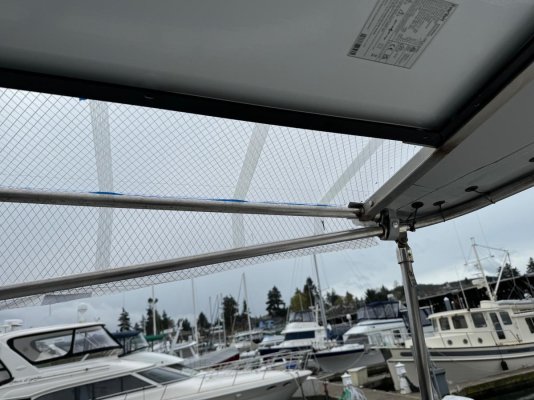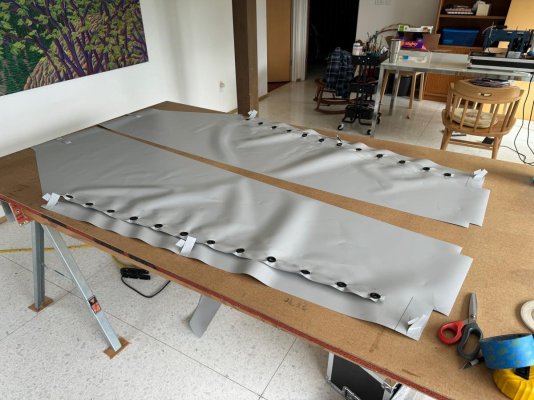Snapdragon III
Senior Member
- Joined
- Sep 1, 2016
- Messages
- 421
- Location
- USA
- Vessel Name
- Snapdragon
- Vessel Make
- Custom 56' Skookum trawler
My boat came with a good sized Bimini/awning over the Portuguese bridge area in front of the pilot house. There is a second outdoor helm station out there which it provides protection for. I really like it, as it keeps the sun off, and more importantly where I live, keeps the rain off. It had 10 100W Renology flexible solar panels mounted on it. I think the whole thing is only about 8 years old, but unfortunately it was falling apart. The Renology panels had been destroyed by the UV from the time the boat spent in the tropics, and were putting out near zero power. The sunbrella canvas it was made out of was fine, but unfortunately they didn't use Tenara thread on it, and all the stitching was rotting and falling apart. The previous owner must have spent a lot of money setting this all up as it was a very complicated bit of fabrication. It's unfortunate that it didn't last a lot longer.

